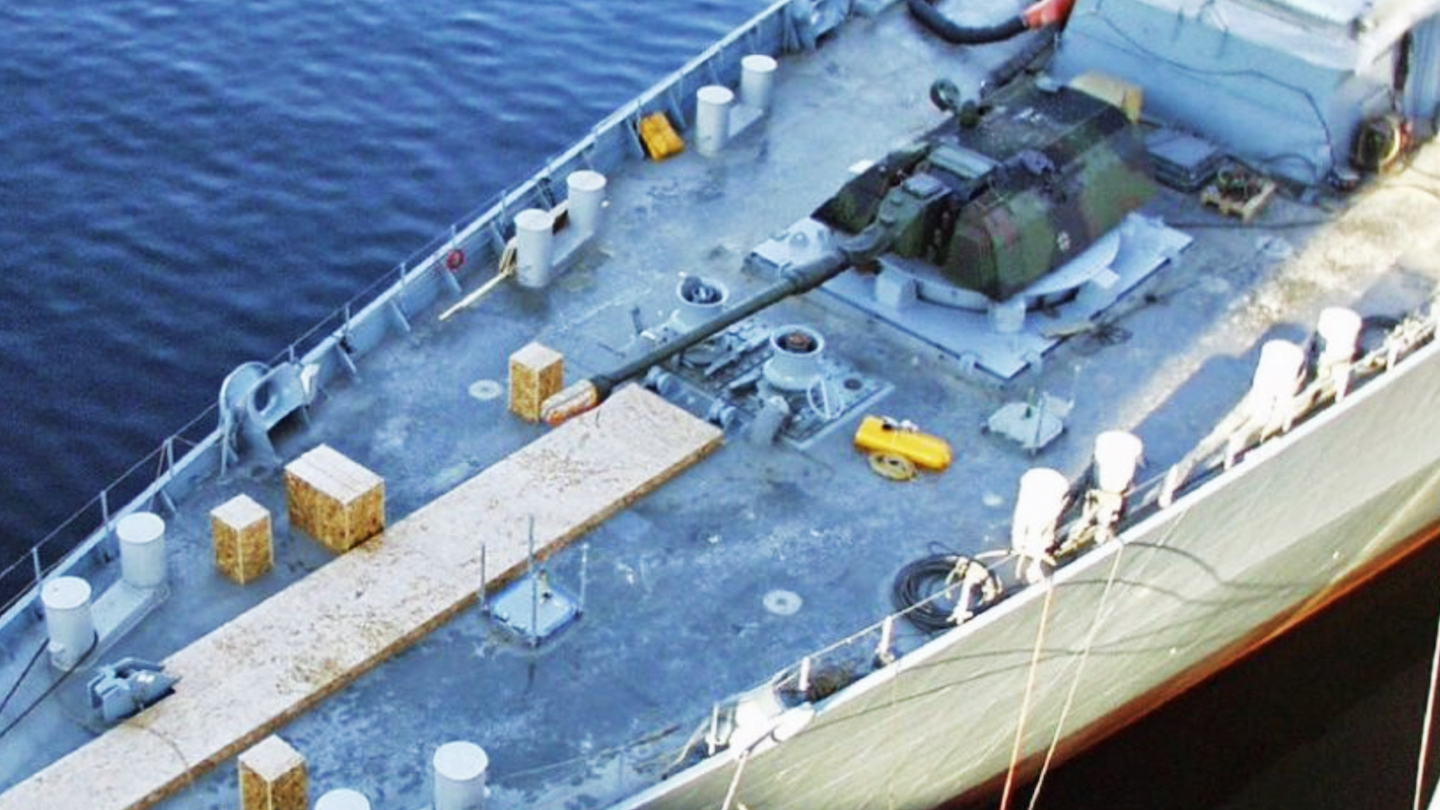German Navy warships were once nearly armed with gun turrets taken from land-based PzH 2000 self-propelled howitzers. The installation was tested in experiments around a decade ago, with some positive results. Although it was ultimately considered too complex an undertaking, it reflected a broader focus on increasing the range and accuracy of naval guns, efforts which continue today.
Under the MONARC (Modular Naval Artillery Concept) program, Germany was one of many nations looking to increase the firepower of its warships’ main guns at the start of the new century. To do this, it looked at adapting the turret and 155mm main armament of the PzH 2000 (or Panzerhaubitze 2000) for naval use.
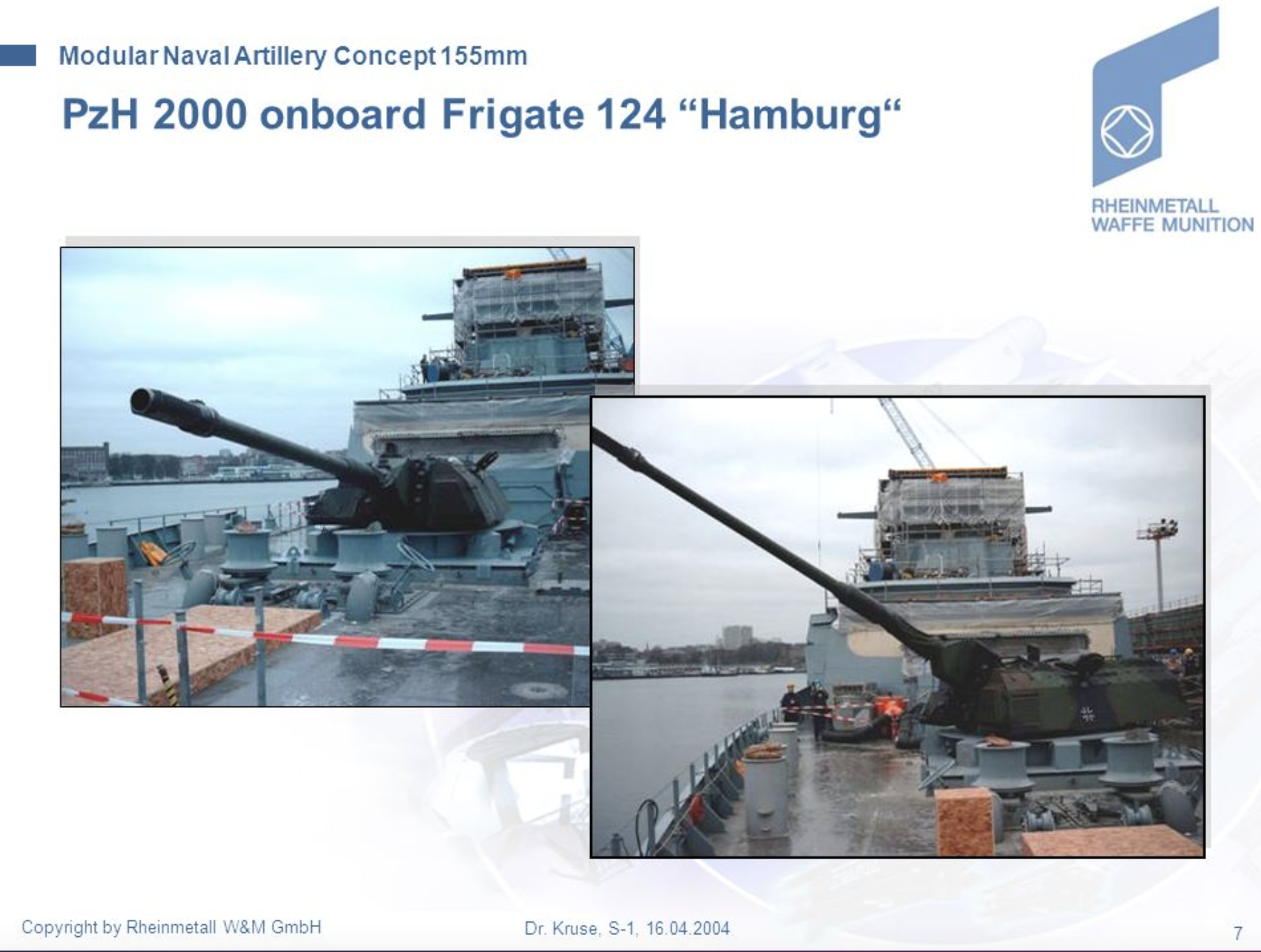
By the end of 2002, 185 of the PzH 2000s had already been delivered to the German Army and the system had established a reputation as among the most capable self-propelled howitzers in service anywhere. Export orders had already been signed in Greece, Italy, and the Netherlands.

The PzH 2000 began life as a joint project, with Krauss-Maffei Wegmann, as the general contractor, providing the tracked armored vehicles and Rheinmetall delivering the main armament and ammunition.
Key features of the PzH 2000 include highly automated navigation and fire control functions. Meanwhile, a fully automatic ammunition-handling system means the gun can fire 10 rounds per minute — or a three-round burst in 10 seconds. These projectiles can hit targets at 25 miles, using standard ammunition, with a very high degree of accuracy conferred by a high-precision gun-laying system. There was also the promise of even longer-range ammunition, with Rheinmetall working on rounds that would be able to hit targets at around 50 miles.
Compare this with the performance of the main guns on the F124 Sachsen class frigates then being built for the German Navy: the 76mm OTO Melara Compact weapon can, according to the service, hit targets at a range of 11 miles. At the same time, the Compact weapon fires a smaller and lighter round than the PzH 2000 and it can also fire much quicker: at a rate of up to 120 rounds per minute in the Super Rapid version.

As well as Krauss-Maffei Wegmann and Rheinmetall, the MONARC program involved German shipbuilder Howaldtswerke-Deutsche Werft (HDW), and the team set out, in Rheinmetall’s words to “create a whole new dimension in surface combatant firepower.”
The program sought to improve the range and firepower of the German Navy’s shipborne artillery, but also do it at a relatively low cost since the land-based PzH 2000 was already in production and service.
To test the concept, the yet-to-be-completed F124 class frigate Hamburg was fitted with a PzH 2000 turret and gun, mounted on the foredeck, where the 76mm Compact gun would usually be fitted.
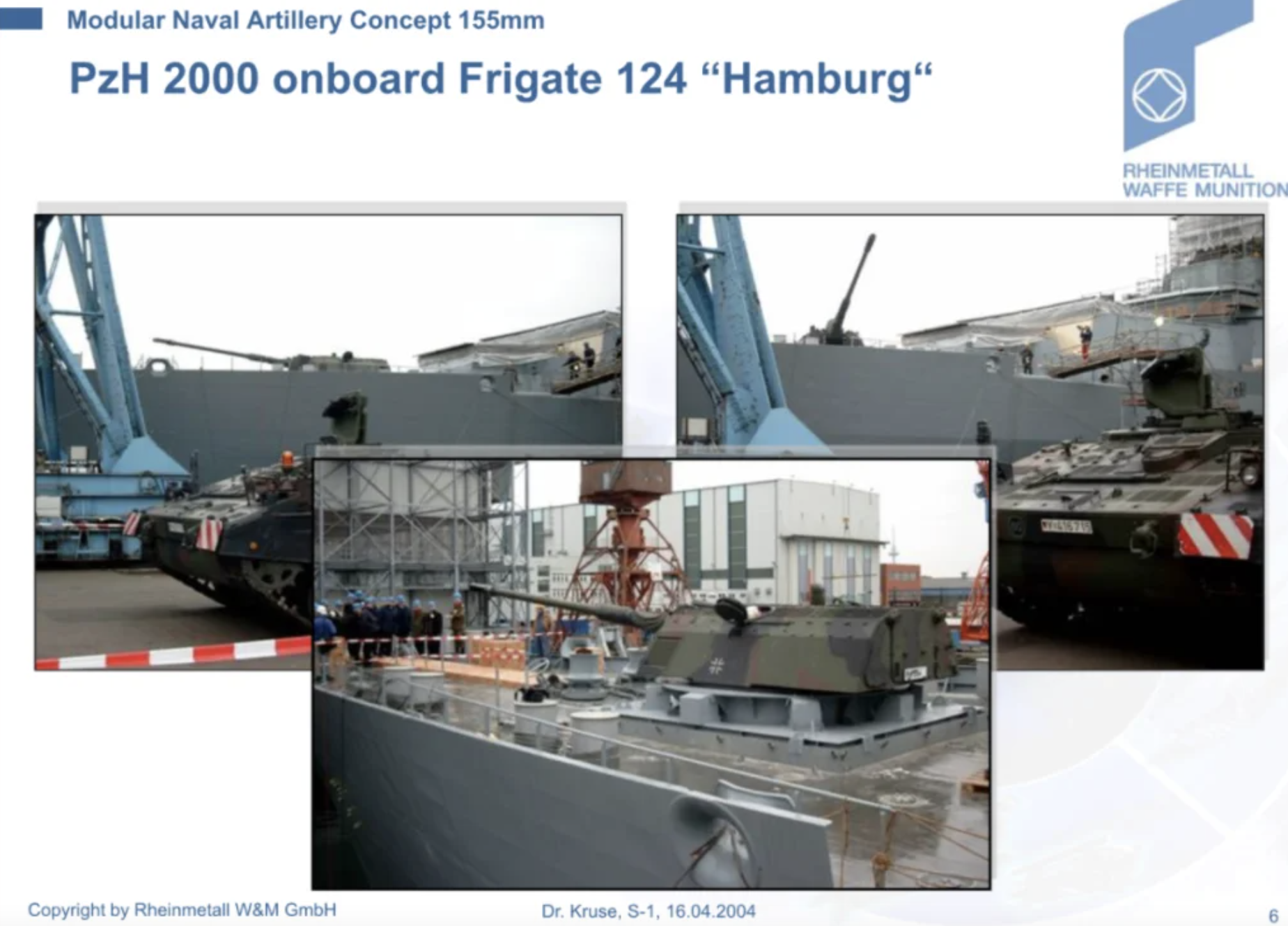
In terms of weight and dimensions, integrating the new weapon was not too problematic. The weight difference was not significant and the F124 class could easily absorb the extra mass, while the space requirements above and below decks were found to be not too different from the 76mm Compact.
However, the major challenge involved the much greater recoil encountered with the PzH 2000’s big 155mm gun. This required an elastic mounting for the weapon, protecting the structure of the warship through force transference.
“By using a flexible mounting rather than rigidly fixing the turret to the deck in the conventional manner, the impact of residual acceleration on the structure of the ship during firing is expected to remain at an acceptable level,” Rheinmetall said at the time. “Since the turret is essentially self-sufficient, all that is required is a 24-volt power connection and a secure link to the operations room and the bridge. In addition, the ammunition storage and handling systems will have to be modified. Furthermore, in order to compensate for the movement of the ship, the gun-laying system will have to be stabilized.”
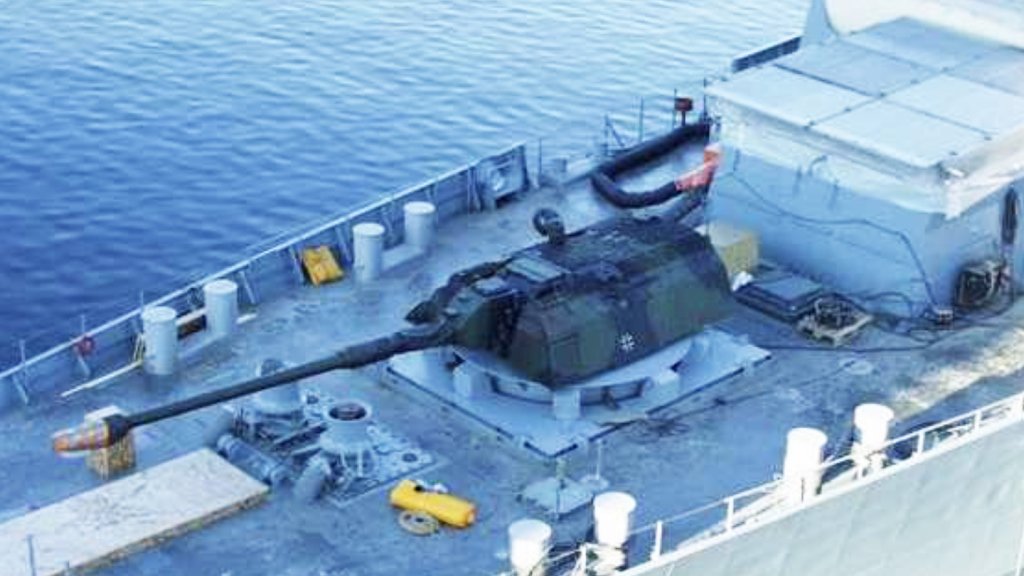
At the time, Rehimentall claimed the temporary installation of the PzH 2000 turret on the Hamburg demonstrated that it retained the performance of the original gun — and also that it could be fitted in a cost-effective way, something that was later questioned. Nevertheless, the companies behind MONARC were confident that the gun could be retrofitted to existing hulls as well as incorporated on new-build frigates and even corvettes.
Test firings of MONARC were conducted, although it’s unclear if these also involved the installation on the Hamburg, which had the turret removed and replaced with a 76mm Compact weapon ahead of its commissioning in December 2004.
However, there were confirmed firings from a land-based test platform that replicated the shipborne installation, carried out by Rheinmetall at its firing range in Unterlüß, northern Germany. The first of these took place in June 2003 and was intended to test the dynamic forces acting on the ship’s deck and internal structure.
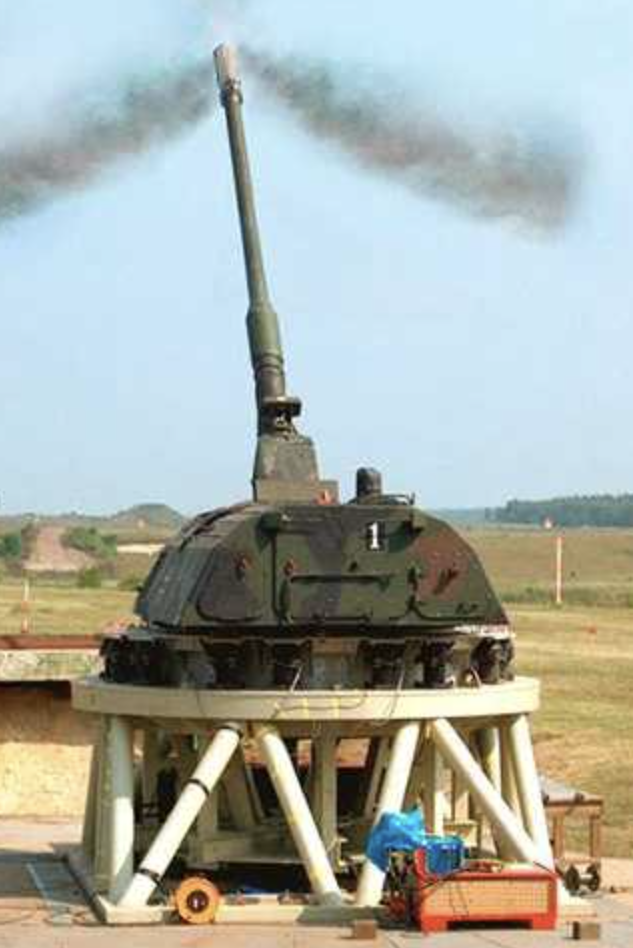
On top of the additional range that the navalized PzH 2000 would offer, it could also call upon a variety of ammunition types, to suit different targets. In this way, it could be optimized for striking targets on land, or against warships and other vessels.
As well as the three-strong F124 class, the four frigates of the F125 Baden-Württemberg class were seen as likely candidates for MONARC. The relatively toothless armament fit of the F125 class is something that TWZ has commented on before, and which more recently led to one of the frigates rerouted to avoid the Red Sea, albeit due to the warship’s very limited air defenses.
The main gun of the F125 class is a 127mm OTO Melara, with a stated range of more than 50 miles when using specialized ammunition. The same gun has since been selected for Germany’s future F126 class of ‘super-sized’ frigate, six of which are planned.
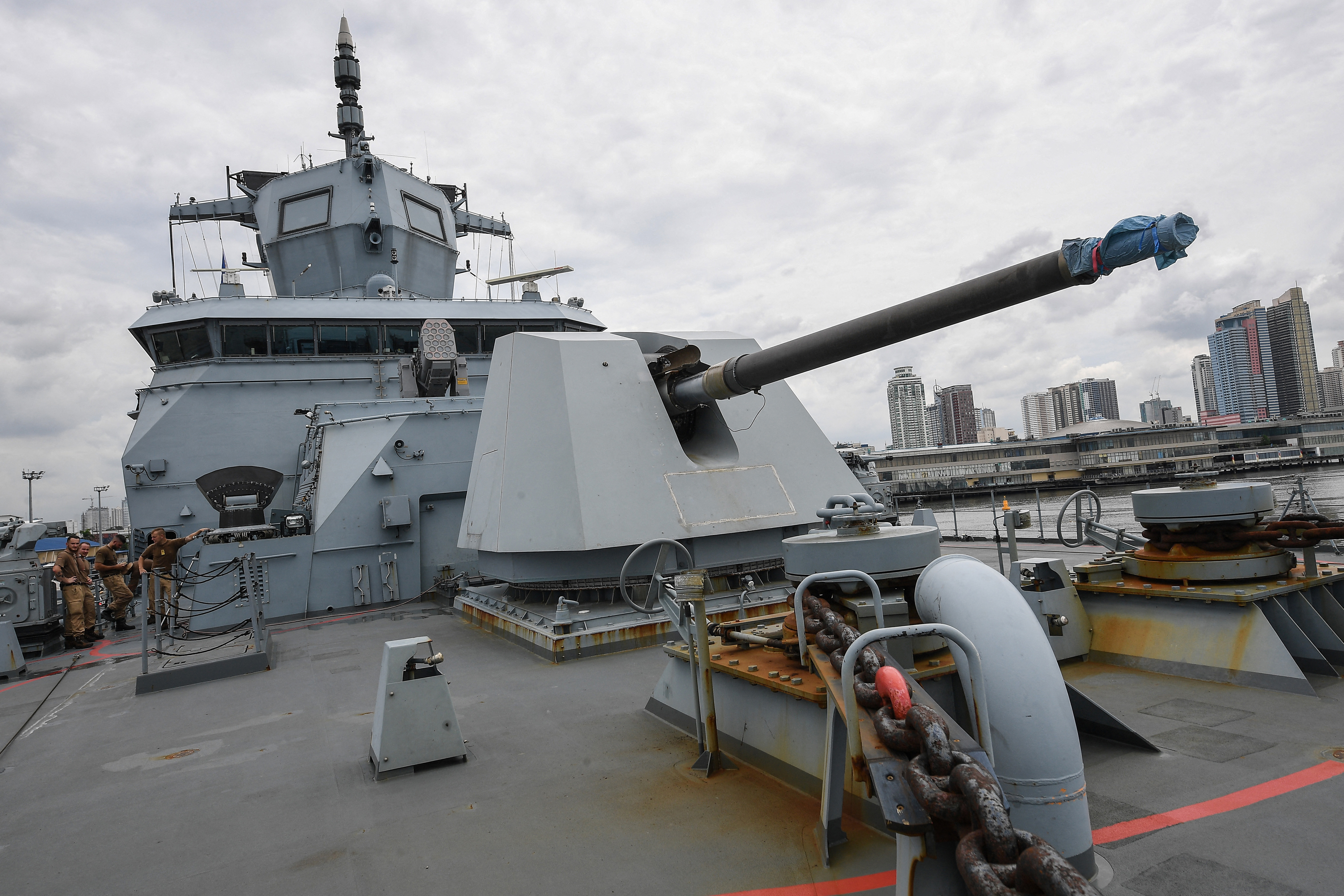
In the event, it was determined that adapting the PzH 2000 for use by warships was simply too onerous — in particular, the modifications needed to deal with the recoil were considerable.
Coupled with the need for a new stabilized gun-laying system, there was also the fact that the existing ammunition for the PzH 2000 was provided in two parts: cartridge case and projectile. In contrast, ammunition for ships’ guns has long been provided as single-element, fixed ammunition. Either a new set of ammunition would have had to be developed for the MONARC — requiring gun modifications, too — or warships and crews would have had to adapt to the land-based standards.
Other reports suggest that the overall cost was, after all, also much higher than anticipated.
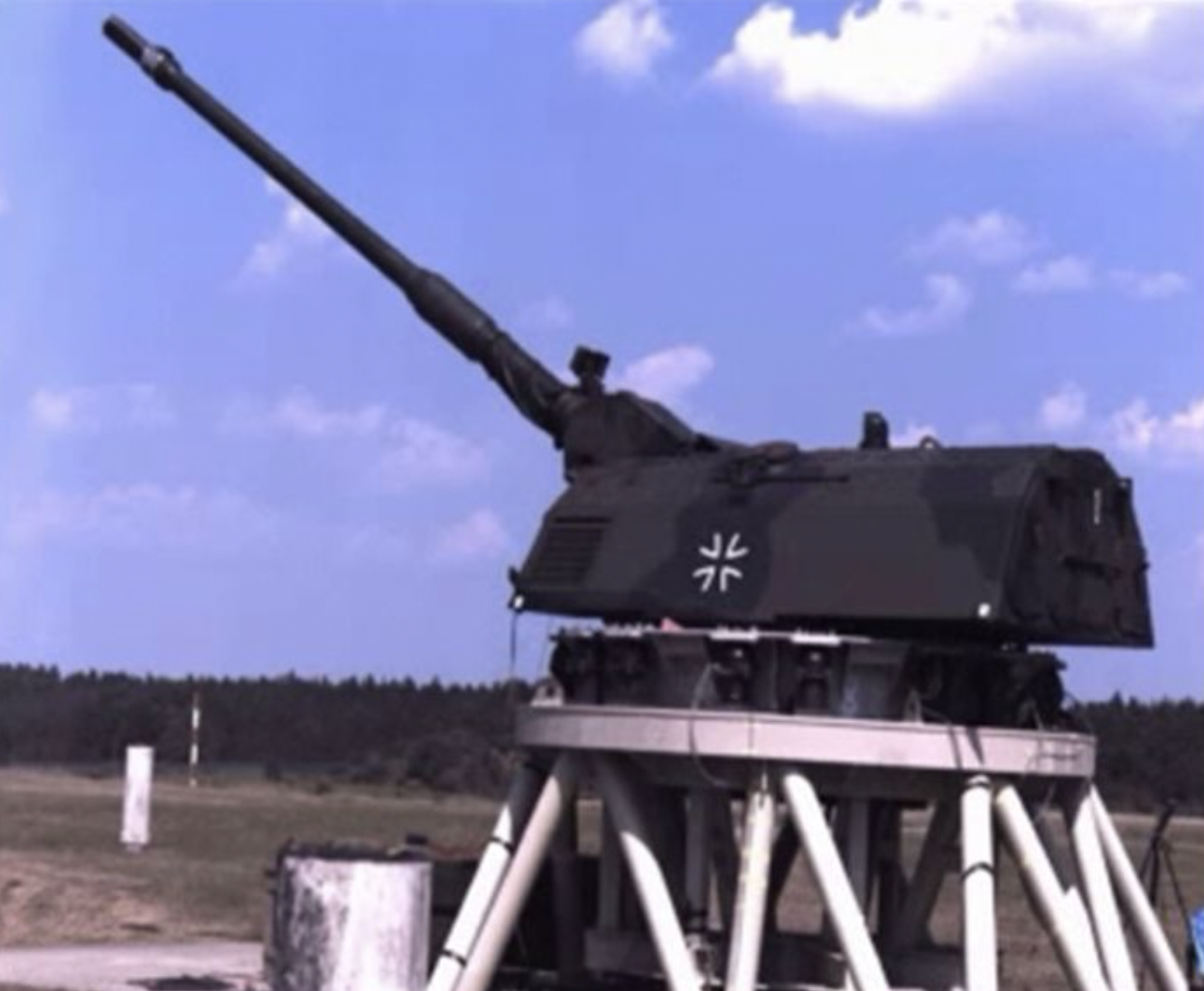
Despite these problems, the kind of solution offered by MONARC also found interest outside of Germany around the same time.
In France, thought was given to adapting the GIAT CAESAR 155mm self-propelled howitzer for naval use, combined with the PELICAN guided ammunition that offered a range of 53 miles.
The United Kingdom’s BAE Systems meanwhile proposed a naval version of its AS90 Braveheart self-propelled gun, which promised to achieve a rate of fire of 18 rounds per minute.
For its part, the U.S. Navy has also explored putting 155mm artillery on warships, although the Advanced Gun System for its stealthy Zumwalt class destroyers was intended for naval use from the outset. However, as costs rose dramatically, the Navy in 2016 opted not to buy any ammunition for those guns and, more recently, decided to remove the turrets and replace them with hypersonic missiles, as you can read about here. The U.S. Navy didn’t give up on the idea of 155mm naval artillery entirely, however, with experiments continuing under the tri-service Moving Target Artillery Round (MTAR).

Overall, the concept of swapping out traditional naval guns for large-caliber artillery — and especially adapting land-based systems for this purpose — has been eclipsed by the arrival of much longer-range ammunition even for medium-caliber weapons.
As an example of this, the Leonardo VULCANO ammunition, in 76mm caliber, has a range of over 19 miles in its unguided version, used for anti-air, anti-surface, and naval gunfire support missions. This is increased to more than 25 miles when using guided long-range ammunition, which is optimized for shore bombardment.

Furthermore, any existing NATO-standard 76mm gun can be adapted to fire the VULCANO ammunition, with no requirement for a new turret to be installed.
While navies around the world continue to look for the right balance between compact and lightweight naval guns, and enhanced range and accuracy, the focus is now very much on using advanced types of ammunition, rather than more radical solutions like the MONARC, which remains a short-lived and fairly unique installation.
Contact the author: thomas@thewarzone.com
